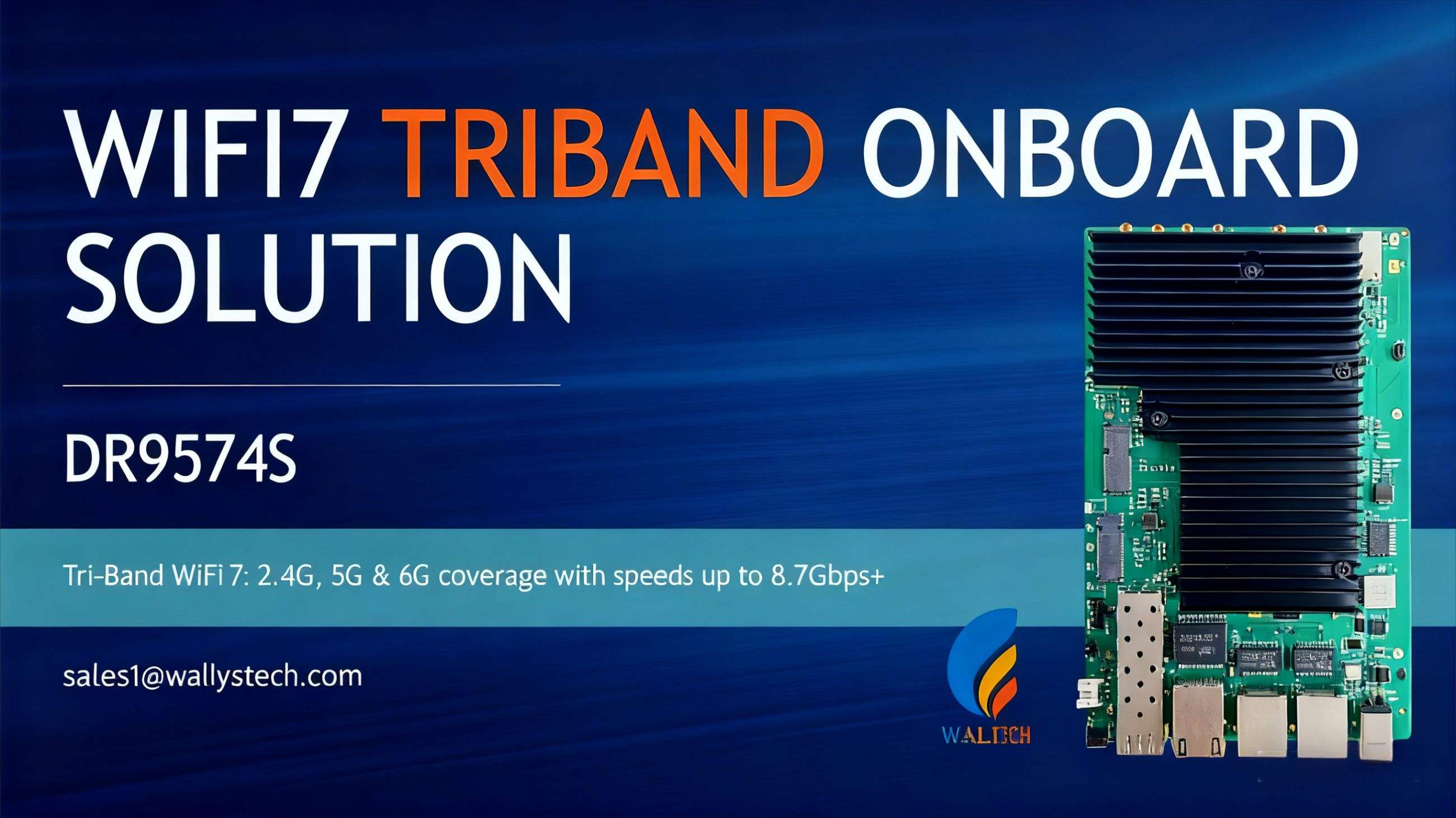IPQ9554 vs IPQ9574: A Deep Dive into Qualcomm’s WiFi 7 ChipsetsAs WiFi 7 moves from concept to deployment, chipset selection has become a critical decision for device manufacturers and solution providers. Qualcomm, a leading player in wireless technology, has introduced a diverse range of platforms under its Networking Pro and Immersive Home series to power next-generation routers, access points, and enterprise-grade solutions. Among these, the IPQ9554 and IPQ9574 stand out as high-performance SoCs designed for different market needs. Let’s dive into how they compare and where each makes the most sense.
1. Core SpecificationsIPQ9554
Quad-core ARM Cortex-A73 CPU
Clock speed up to 2.6 GHz
Designed for mid-to-high-tier WiFi 7 CPE and enterprise APs
Supports up to 10.8 Gbps aggregate capacity
Optimized for power efficiency and thermal control
IPQ9574
Quad-core ARM Cortex-A73 CPU, higher clock and performance headroom
Up to 16 spatial streams when combined with Qualcomm’s WiFi 7 radio (QCN9274)
Tri-band capability (2.4 GHz, 5 GHz, 6 GHz)
Supports peak throughput up to 20+ Gbps
Targeted at enterprise, carrier-class, and premium infrastructure solutions
2. Performance and ThroughputThe IPQ9554 provides a strong balance between efficiency and performance, making it ideal for enterprise access points and CPE where cost and thermal budgets are constrained.
On the other hand, the IPQ9574 is designed to push the boundaries of WiFi 7. With tri-band support and the ability to leverage Multi-Link Operation (MLO), it can handle high-density deployments such as stadiums, airports, or large-scale enterprise networks where performance consistency is critical.
3. Target ApplicationsIPQ9554:
IPQ9574:
Carrier-grade WiFi 7 routers
Premium mesh nodes
High-performance enterprise APs for mission-critical environments
Industrial networking where low latency and ultra-high throughput are required
4. Cost and Scalability ConsiderationsWhile both chipsets are part of Qualcomm’s Networking Pro portfolio, they cater to different budgets. The IPQ9554 offers a cost-optimized entry point for WiFi 7, while still delivering strong performance. The IPQ9574, however, comes with added hardware capability, supporting tri-band and higher throughput, but at a higher cost. For projects scaling across thousands of units, this price-to-performance tradeoff will be a key factor.
5. Choosing the Right PlatformIf your project focuses on balanced performance and efficiency, the IPQ9554 is a strong candidate.
If you require cutting-edge WiFi 7 features, tri-band flexibility, and maximum throughput, the IPQ9574 is the clear choice.
Ultimately, your selection depends on your deployment scenario: enterprise vs. carrier-grade, performance vs. cost, and scalability vs. feature depth.
ConclusionQualcomm’s IPQ9554 and IPQ9574 are both powerful WiFi 7 SoCs, but their strengths cater to different needs. For organizations seeking performance without overspending, the IPQ9554 is a reliable option. For those who need the absolute best in WiFi 7 networking, especially in high-demand environments, the IPQ9574 stands out as the premium solution.
You can check out the
Wallys DR9574S product page
here

